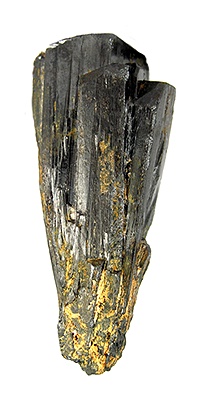Hi folks. Newbie here, reached the precipice and about to fall into the pedal building world as a hobby...!
Like many, I have been spending time researching and trying to make some sense of things whilst contending with differing opinions, misinformation, etc. Steep learning curve but I feel like I'm beginning to get somewhere now, thanks in no small part to threads on this forum so thanks to all!
One thing I've not seen any significant discussion over is the use of Polymer or Hybrid Electrolytics in place of traditional Aluminium Electrolytics. These newer caps seem to solve a number of issues that people seem to have with Electrolytics, namely:
- Significantly lower ESR
- Longer life span
From what I've seen, the downsides compared to Aluminium Electrolytics are:
- Larger leakage current
- Large capacitance sizes seem harder to find
Where I am struggling is with the next stage; making use of this information! As I understand it, electrolytics seem to be used mostly for power supply filtering and in LFO circuits, is that right?
For power supply filtering, I imagine the lower ESR enhances performance by allowing more ripple to pass to ground, and less resistive heating in the process. I would imagine the leakage current is not a major factor in this application as there should never be enough to meaningfully impact DC power rail voltage. Can anyone confirm or correct me on this?
In terms of LFO, I believe that consistent performance is really important and therefore Electrolytics are arguably a bad choice due to their strong frequency dependence on ESR and relatively high leakage current. I'd imagine with increased leakage current, Polymer caps would be even worse here but maybe the reduced ESR makes them more suitable. Anyone have any thoughts here, is it best to stick to Tantalums instead?
There's probably other applications for Electrolytics that I'm currently unaware of so would appreciate if anyone wishes to elaborate.
I guess a point I'd like to clarify is that regardless of what I end up using, I'm really keen to understand the influence of component variables on the circuit and that's where I'm coming from with the question. The practical questions such as whether there will be any audible difference or change in reliability is almost an aside for me just now, I'm keen to understand the fundamentals which for this particular component don't seem to have been discussed to death like everything else!
If you've read this thread, thanks for taking the time. If you are able to share any insight, I'd really appreciate you taking the time for that too.
Thanks,
Sam
Like many, I have been spending time researching and trying to make some sense of things whilst contending with differing opinions, misinformation, etc. Steep learning curve but I feel like I'm beginning to get somewhere now, thanks in no small part to threads on this forum so thanks to all!
One thing I've not seen any significant discussion over is the use of Polymer or Hybrid Electrolytics in place of traditional Aluminium Electrolytics. These newer caps seem to solve a number of issues that people seem to have with Electrolytics, namely:
- Significantly lower ESR
- Longer life span
From what I've seen, the downsides compared to Aluminium Electrolytics are:
- Larger leakage current
- Large capacitance sizes seem harder to find
Where I am struggling is with the next stage; making use of this information! As I understand it, electrolytics seem to be used mostly for power supply filtering and in LFO circuits, is that right?
For power supply filtering, I imagine the lower ESR enhances performance by allowing more ripple to pass to ground, and less resistive heating in the process. I would imagine the leakage current is not a major factor in this application as there should never be enough to meaningfully impact DC power rail voltage. Can anyone confirm or correct me on this?
In terms of LFO, I believe that consistent performance is really important and therefore Electrolytics are arguably a bad choice due to their strong frequency dependence on ESR and relatively high leakage current. I'd imagine with increased leakage current, Polymer caps would be even worse here but maybe the reduced ESR makes them more suitable. Anyone have any thoughts here, is it best to stick to Tantalums instead?
There's probably other applications for Electrolytics that I'm currently unaware of so would appreciate if anyone wishes to elaborate.
I guess a point I'd like to clarify is that regardless of what I end up using, I'm really keen to understand the influence of component variables on the circuit and that's where I'm coming from with the question. The practical questions such as whether there will be any audible difference or change in reliability is almost an aside for me just now, I'm keen to understand the fundamentals which for this particular component don't seem to have been discussed to death like everything else!
If you've read this thread, thanks for taking the time. If you are able to share any insight, I'd really appreciate you taking the time for that too.
Thanks,
Sam

